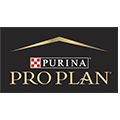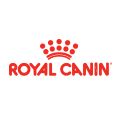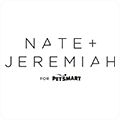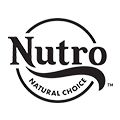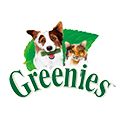

-
shop by brand
- shop by pet
-
pet services
-
Sale
-
Featured
- pharmacy
-
help
-
our experts are available to help:
Contact Us Track Your Order
-
-
Store Services
Grooming
Training
Adoptions
Veterinary
Curbside Pickup
Store Hours
TODAY 9AM-9PM
SAT 9AM-9PM
SUN 10AM-7PM
MON 9AM-9PM
TUE 9AM-9PM
WED 9AM-9PM
THU 9AM-9PM
Note: Hours for Services (Grooming, PetsHotel and Training) and Holidays may vary. Please see store details or contact the store for more information.
account log in
account sign up
login required
Autoship orders require an account for recurring orders. Please sign in or create an account to complete your purchase.
sign in create accountforgot password
If an account exists for this email, we've sent a temporary link to reset your password.
If you don’t receive this email, check your SPAM folder or create an account.
return to sign inchange password
Password has been successfully updated.
return to sign in top
top
oops! something went wrong
We are facing some technical issues. Please try again later.
-
shop by brand
- shop by pet
-
pet services
-
Sale
-
Featured
- pharmacy
-
help
-
our experts are available to help:
Contact Us Track Your Order
-
-
Store Services
Grooming
Training
Adoptions
Veterinary
Curbside Pickup
Store Hours
TODAY 9AM-9PM
SAT 9AM-9PM
SUN 10AM-7PM
MON 9AM-9PM
TUE 9AM-9PM
WED 9AM-9PM
THU 9AM-9PM
Note: Hours for Services (Grooming, PetsHotel and Training) and Holidays may vary. Please see store details or contact the store for more information.
account log in
account sign up
login required
Autoship orders require an account for recurring orders. Please sign in or create an account to complete your purchase.
sign in create accountforgot password
If an account exists for this email, we've sent a temporary link to reset your password.
If you don’t receive this email, check your SPAM folder or create an account.
return to sign inchange password
Password has been successfully updated.
return to sign in top
topREPTILE /
Best Habitats for Reptiles: Lizards, Geckos & Dragons
Building the best reptile habitat is a blast and shows just how much you love your pet. Whether you are bringing home a pet gecko, lizard, or dragon, they all deserve the best home that meets all of their needs and wants. While all of these pets have their scaly skin in common, some of them need different things in their habitats to be happy.
Why a Good Reptile Habitat is Important
While reptiles make great pets, they are not necessarily meant to thrive in the same environment you do. Reptiles need access to direct sunlight, places to cool down, enough space for their size and other species-specific needs to thrive in your home. The appropriate habitat helps reptiles regulate their body temperature, stay happy and stay living their best life. So how do you set up the best environment for your pet reptile?
The specific environment that your pet needs depends on the type of reptile you have. Do you have a gecko, a dragon or a lizard? Let's start there.
Best Habitat Setup for Long-Tailed Lizards
Long-tailed lizards are great beginner reptile pets. They grow up to 12’ long and live for an average of 5 years. A long-tailed lizard’s terrarium should include the following.
- Terrarium - A long-tailed lizard needs a 20-gallon (75 liters) terrarium, preferably one that is tall rather than wide.
- Screened Lid - Their terrarium needs a tightly secured screened lid.
- Substrate - Line their habitat with 2-3’ of a reptile-safe substrate.
- UVB light - These pets require a 12-hour day and night cycle. A UVB light with a timer helps them properly absorb calcium, which is important for bone health, muscle function and more.
- Heat Lamp - Long-tailed lizards require a temperature gradient, meaning the temperature of their tank should gradually increase or decrease from side to side. A heat lamp at one side can help you create that.
- Basking Spot - Create a spot, closer to the top where your long-tailed lizard can soak up the UV rays and warmth.
- Thermometers - Use two thermometers, one at the top and one at the bottom. This helps make sure you are keeping the perfect temperature gradient from warm to cool. During the day, the cool area should range from75-80° F (24-27°C) and the basking spot should be 85-90°F (29-32°C). At night, the habitat temperature should be 65-75°F (18-24°C).
- Hygrometer - A hygrometer is used to measure humidity. The humidity should stay between 60-80%.
- Water Dish - Reptile feeding accessories like water dishes are a great way to maintain humidity in their habitat.
- Mister - Misting your pet’s habitat is also a great way to maintain humidity. Do so 1-2 times a day or use an automatic fogger or a drip system.
- Food Dish - A reptile food dish is a perfect place to keep all their meals and snacks. Make sure to have the right reptile food storage as well.
- Plants and Décor - Plants and décor can help make your lizard's habitat feel more like their natural environment. While some live plants are great options, artificial terrarium plants are much easier to care for. Put in some things, like rocks or branches, for your pet to climb on, hide in and explore.
- Habitat Maintenance Supplies - Make sure to get all the reptile cleaning supplies, habitat deodorizers/sanitizers and waste removers you need to keep their habitat clean.
Best Habitat Setup for Geckos
Geckos are great beginner pets. Some of the most common types of pet geckos include the Chinese cave gecko, the leopard gecko and the giant day gecko. Their lifespan varies greatly depending on the type of gecko you have. Giant day geckos can live 6-8 years, Chinese cave geckos can live 10-12 years and leopard geckos can live anywhere from 15-20 years on average.
All geckos need these basics:
- Terrarium
- Screened Lid
- Substrate
- UVB Bulb
- Heat Lamp
- Basking Spot
- Thermometers
- Hygrometers
- Water Dish
- Food Dish
- Plants and Décor
- Reptile Cleaning Supplies
So let’s break down their habitats by type.
Giant Day Geckos
- Terrarium Size - At least 24” tall
- Substrate - Reptile carpet, 2-3 inches of sphagnum moss and coconut fiber/peat moss.
- Temperature - Giant day geckos need the daytime temperature of their tank to stay between 80-90°F (27-32°C) on the cool side of the tank and 90-95°F (32-35°C) on the warm side. The nighttime temperature should stay between 75-80°F (24-27°C).
- Humidity - Giant day geckos need their humidity to stay between 60-80%.
Chinese Cave Geckos
- Terrarium Size - A 20-gallon (75 liters) terrarium.
- Substrate - Reptile carpet, 2-3 inches of a combination of soil (coconut fiber or peat moss), cypress mulch or reptile bark and sphagnum moss.
- Temperature - Chinese cave geckos need the daytime temperature to stay between 65-80°F (18-27°C) on the cool side of the tank and a nighttime temperature should stay between 65-72°F (18-22°C). Never let their habitat temperature drop below 65°F (18°C)
- Humidity - Chinese cave geckos need the humidity in their habitat to stay between 50-80%.
Leopard Geckos
- Terrarium Size - 1-2 leopard geckos can be housed together in a 20-gallon (75 liters)
- Substrate - Reptile carpet or tile.
- Temperature - Leopard geckos need the daytime temperature to stay between 75-90°F (24-32°C) on the cool side of the tank and 85-95°F (29-35°C) on the warm side. The nighttime temperature should stay between 65-75°F (18-24°C) .
- Humidity - Leopard geckos need the humidity in their habitat to stay between 10-30% with a moist retreat.
Best Habitat for Dragons
The most common types of pet dragons are bearded dragons and Chinese water dragons. While the bearded dragon is a great beginner reptile pet, the Chinese water dragon is better for intermediate pet parents. Their lifespans last anywhere from 10-15 years on average. Bearded dragons can grow to be 24” long while Chinese water dragons can grow up to 36”.
All dragons need these essentials
- Terrarium
- Screened Lid
- Substrate
- Full-Spectrum UVB Bulb
- Heat Lamp
- Basking Spot
- Thermometers
- Hygrometers
- Water Dish
- Food Dish
- Plants and décor
- Ramps
- Cleaning Supplies
Now let’s break them down by type
Bearded Dragon
- Terrarium - 10-20 gallon (75 liters) terrarium or larger
- Substrate - Reptile carpet or tile
- Temperature - Bearded dragons need the daytime temperature to stay between 75-85°F (24-29°C) on the cool side of the tank and 95-100°F (35-38°C) on the warm side/basking spot. The nighttime temperature should stay between 65-75°F (18-24°C).
- Humidity - Bearded dragons need humidity to stay 20-30% in their habitat.tat.
Bringing home a pet reptile is exciting. Make sure you have all the essential reptile supplies with a reptile starter kit before setting up the perfect habitat.




